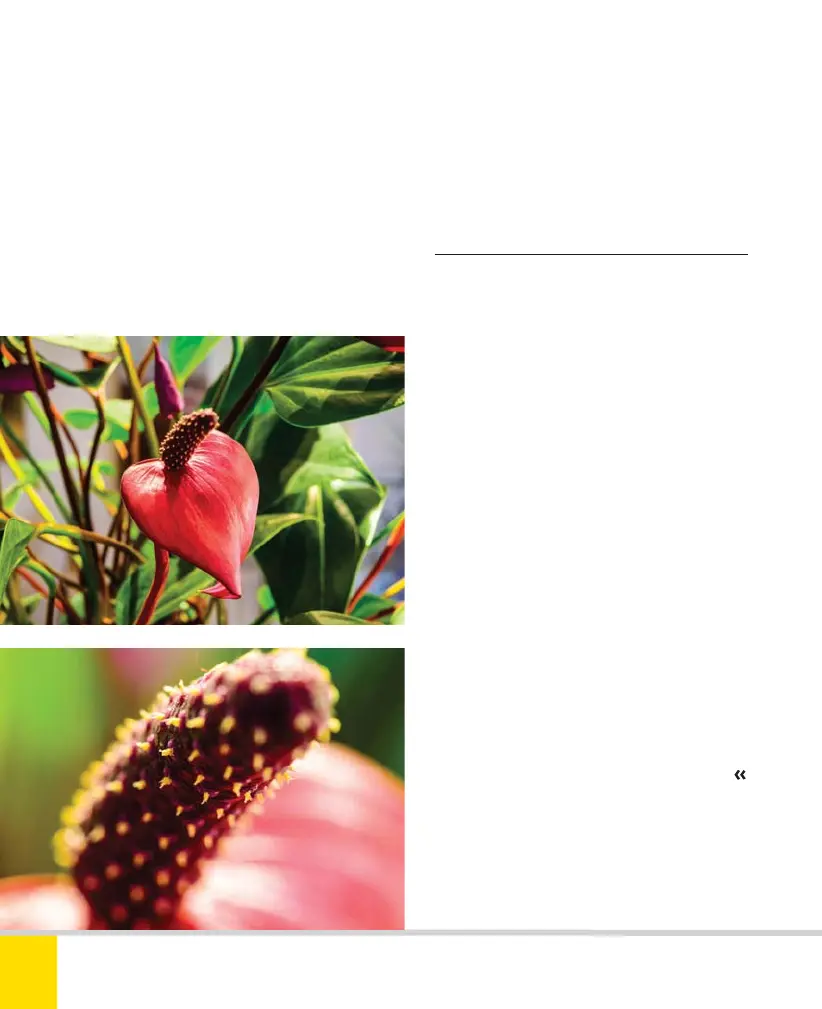Free ebooks ==> www.ebook777.com
160
NIKON D5300
5
»
MACRO PHOTOGRAPHY
›
Reproduction ratio
There’s no exact definition of “close-up”,
but “macro” should be used more precisely.
Macro photography really means
photography of objects at life-size or
larger, implying a reproduction ratio
(see below) of at least 1:1. Many zoom
lenses are branded “macro” when their
reproduction ratio is around 1:4, or 1:2
The reproduction ratio (or image
magnification) is the ratio between the
actual size of the subject and the size of its
image on the D5300’s imaging sensor,
which measures 0.9in. x 0.6in. or 23.5mm x
15.6mm. An object of the same dimensions
(smaller than an SD memory card)
captured at 1:1 would exactly fill the image
frame. When the image is printed, or
displayed on a computer screen, it may
appear many times larger, but that’s
another story.
A 1:4 reproduction ratio means that
the smallest subject that would give you
a frame-filling shot is one that’s four times
as long or wide as the sensor. With
DX-format cameras like the D5300 this is
about 3.7in. x 2.5in. or 94mm x 62mm—
a fraction larger than a credit card.
MACRO-COSM
The first shot (top left) has a reproduction ratio
of approximately 1:4; this is about as good as
you’ll get with most “normal” lenses. The second
(left), taken with a macro lens at the closest
possible distance, gives approximately life size
(1:1) reproduction. 70mm (top left) and 100mm
(left) macro, 1 sec., f/11, ISO 800.
at best. This still allows much fascinating
close-up photography, but it isn’t
“proper” macro.
Nikon D5300 Ch5 158-167 P2 RY.indd 160Nikon D5300 Ch5 158-167 P2 RY.indd 160 19/02/2014 16:5719/02/2014 16:57

